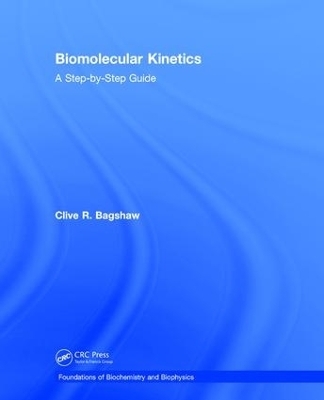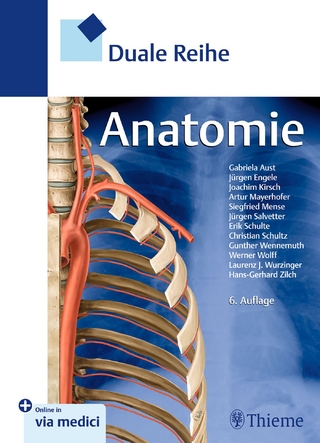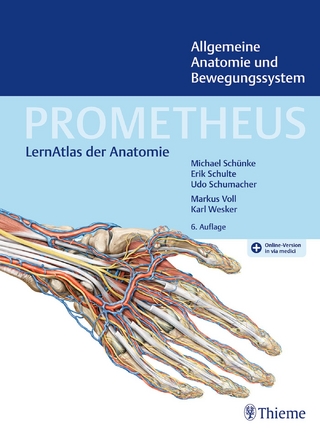
Biomolecular Kinetics
CRC Press (Verlag)
978-1-138-06658-8 (ISBN)
"a gem of a textbook which manages to produce a genuinely fresh, concise yet comprehensive guide"
–Mark Leake, University of York
"destined to become a standard reference…. Not just a ‘how to’ handbook but also an accessible primer in the essentials of kinetic theory and practice."
–Michael Geeves, University of Kent
"covers the entire spectrum of approaches, from the traditional steady state methods to a thorough account of transient kinetics and rapid reaction techniques, and then on to the new single molecule techniques"
–Stephen Halford, University of Bristol
This illustrated treatment explains the methods used for measuring how much a reaction gets speeded up, as well as the framework for solving problems such as ligand binding and macromolecular folding, using the step-by-step approach of numerical integration. It is a thoroughly modern text, reflecting the recent ability to observe reactions at the single-molecule level, as well as advances in microfluidics which have given rise to femtoscale studies. Kinetics is more important now than ever, and this book is a vibrant and approachable entry for anyone who wants to understand mechanism using transient or single molecule kinetics without getting bogged down in advanced mathematics.
Clive R. Bagshaw is Emeritus Professor at the University of Leicester, U.K., and Research Associate at the University of California at Santa Cruz, U.S.A.
Clive Bagshaw obtained a BSc in Biochemistry at the University of Birmingham and a PhD from the University of Bristol. His thesis involved investigation of muscle myosin ATPase activity using transient kinetic methods. The resultant kinetic mechanism, proposed together with his supervisor David Trentham, became textbook information. Following post-doctoral periods at the Universities of Pennsylvania and Oxford, he obtained a lectureship at the University of Leicester, where he taught courses on protein structure and function for 30 years. He continued his research of myosin ATPase activity, initially using a home-built stopped-flow apparatus based on the Gutfreund design. Subsequently, his instrument arsenal was extended, in collaboration with other faculty members, to include commercial stopped-flow, quenched-flow, temperature-jump and flash photolysis instruments. His own research was extended into the mechanisms of myosin ATPase regulation by Ca2+ ions and the kinetics of non-muscle myosins. He wrote a short textbook on Muscle Contraction in 1982, which was revised and extended in 1993 to include in vitro motility assays. The latter was inspired by a sabbatical period in Jim Spudich's laboratory at Stanford University. On return to Leicester, he constructed a total internal reflectance fluorescence microscope to study ATP turnover by myosin at the single-molecule level. In the search for suitable fluorescence probes, he also studied the photophysics of a number of variants of green fluorescent proteins. More recently, he has been involved in collaborative research on other cytoskeletal proteins, S100 proteins, splicing factors and DNA-based photonic wires. From year 2000, Clive has been an instructor on the biannual EMBO Practical Course on Transient Kinetics held at the University of Kent. In 2002 he obtained a personal chair in physical biochemistry and retired from Leicester University in 2011. This transition was catalyzed by a sabbatical at the University of California at Santa Cruz in the laboratory of Michael Stone, which led to an honorary research position that provided the academic resources and freedom to write this book on kinetics. He continues to assist in research using single-molecule methods to study telomerases and enjoy the spectacular natural history of the Monterey Bay.
Introduction. Kinetic Theory. Some Underlying Physical Principles. Enzyme Kinetics. Beyond Enzyme Kinetics. Experimental Strategies. Instrumentation. Data Analysis. Single-Molecule Kinetics. Kinetic Thinking: Back To The Future. Appendices
| Erscheinungsdatum | 06.09.2017 |
|---|---|
| Reihe/Serie | Foundations of Biochemistry and Biophysics |
| Zusatzinfo | 256 Line drawings, black and white; 44 Halftones, black and white |
| Verlagsort | London |
| Sprache | englisch |
| Maße | 203 x 254 mm |
| Gewicht | 1030 g |
| Themenwelt | Medizin / Pharmazie ► Allgemeines / Lexika |
| Studium ► 1. Studienabschnitt (Vorklinik) ► Anatomie / Neuroanatomie | |
| Naturwissenschaften ► Biologie ► Biochemie | |
| Naturwissenschaften ► Chemie ► Physikalische Chemie | |
| Naturwissenschaften ► Physik / Astronomie ► Angewandte Physik | |
| ISBN-10 | 1-138-06658-3 / 1138066583 |
| ISBN-13 | 978-1-138-06658-8 / 9781138066588 |
| Zustand | Neuware |
| Informationen gemäß Produktsicherheitsverordnung (GPSR) | |
| Haben Sie eine Frage zum Produkt? |
aus dem Bereich


